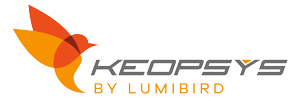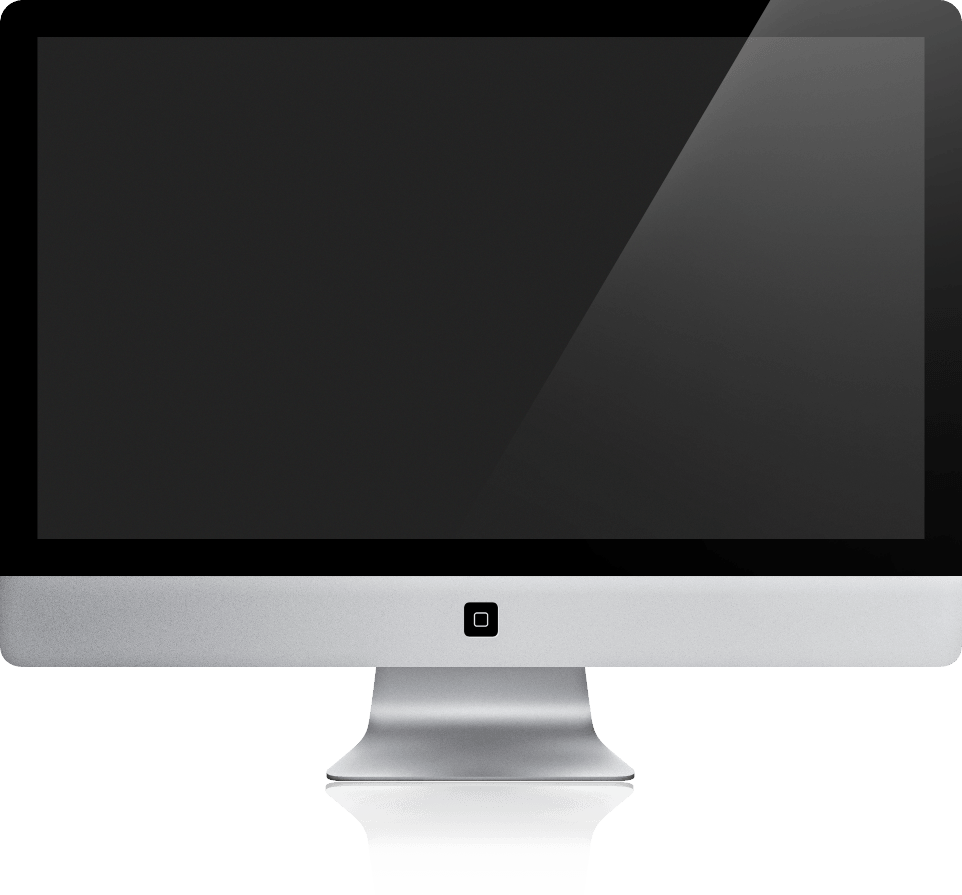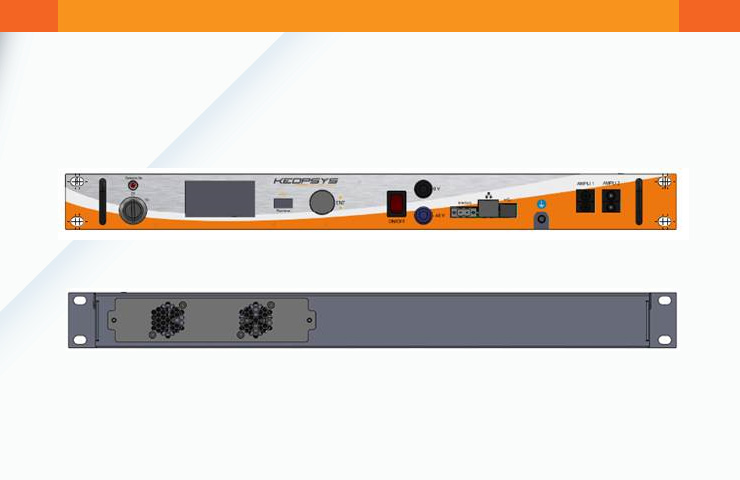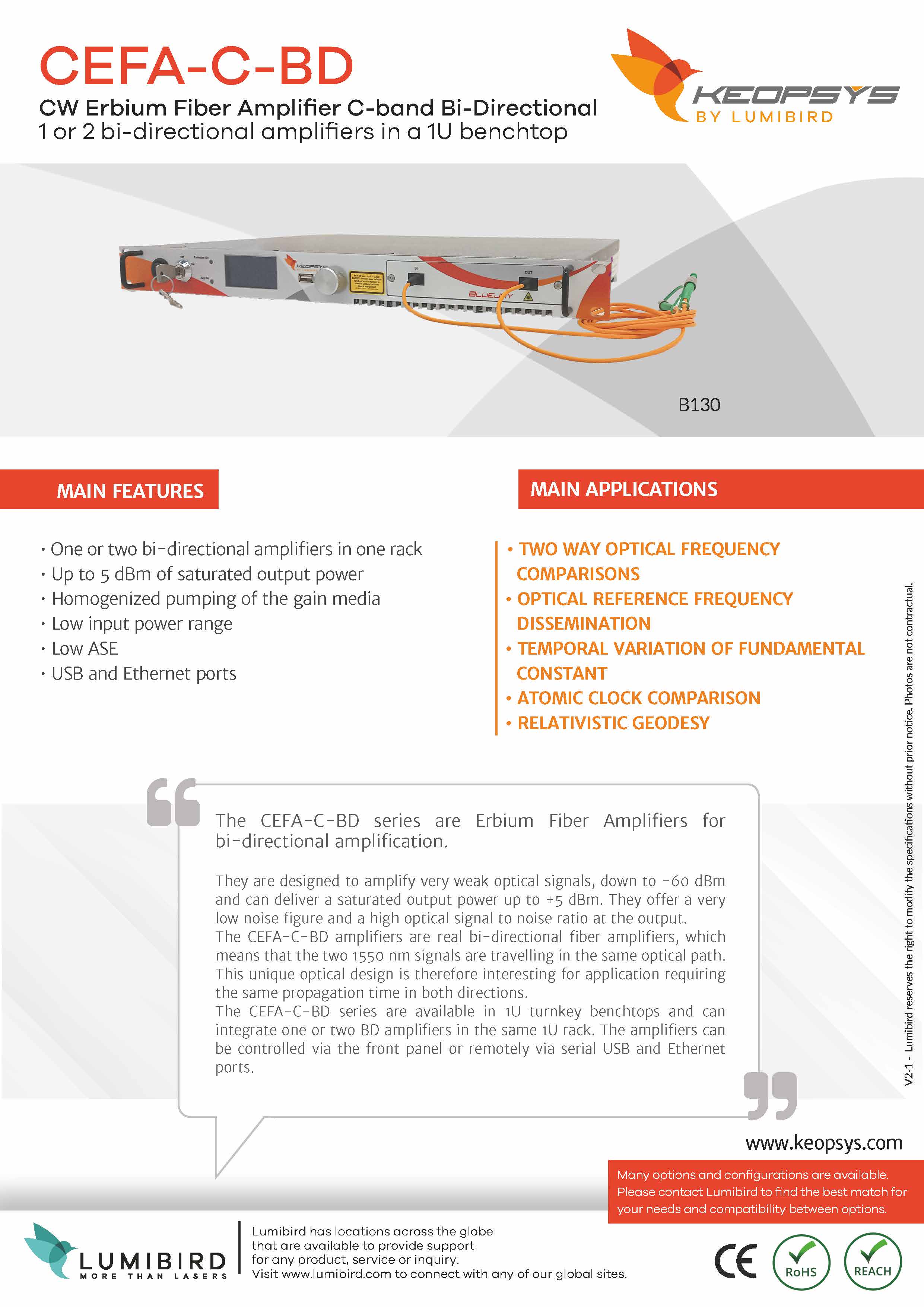CEFA-C-BD is a real bi-directional fiber amplifier. Therefore, both directions of the laser are traveling into the same optical fiber. With Keopsys unique design, both ways are amplified equally.
Lumibird uses components and especially the injector for a high pump efficiency. This component allows Lumibird to reduce the pump power diode and therefore increase the lifetime duration of the complete system.
Lumibird fiber technology offers no maintenance and air cooled system.
Interfaces
Our stand alone rack is easy to install and to use; all connections are on the front face: USB to an RS232 converter, SHH supervision and Ethernet with SNMP V2 and more classically from the front panel.
Amplifiers standard dimensions (19”) and 1U high permit to integrate it into mostly cabinets.
The robust design of the rack offers great reliability over an extended period.
Optical performances and applications
Amplifiers are designed for weak input power range (down to -60dBm), and low noise figure. Thanks to this, CEFA-C-BD is useful in many applications such as optical reference frequency dissemination, telecom…



